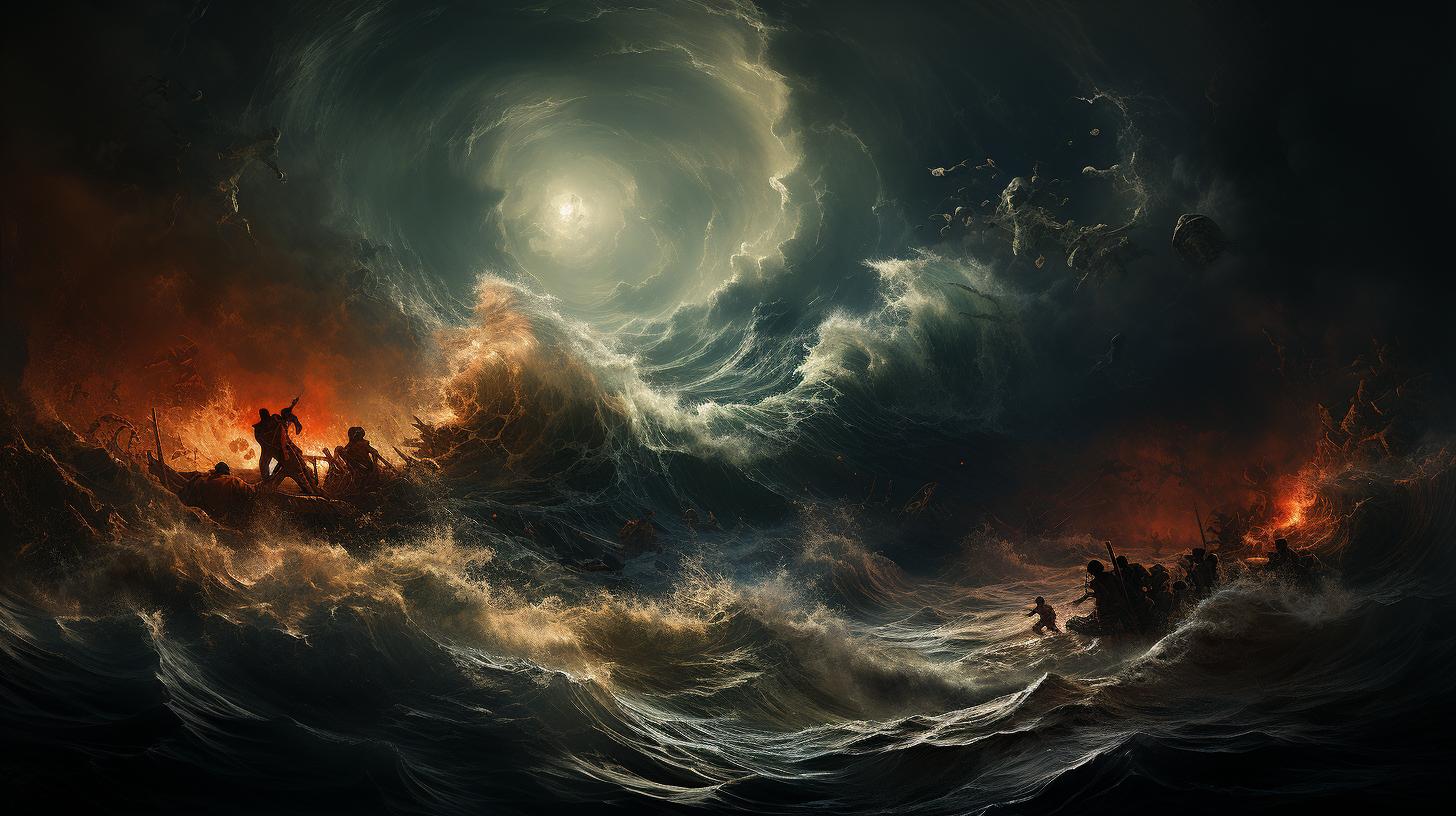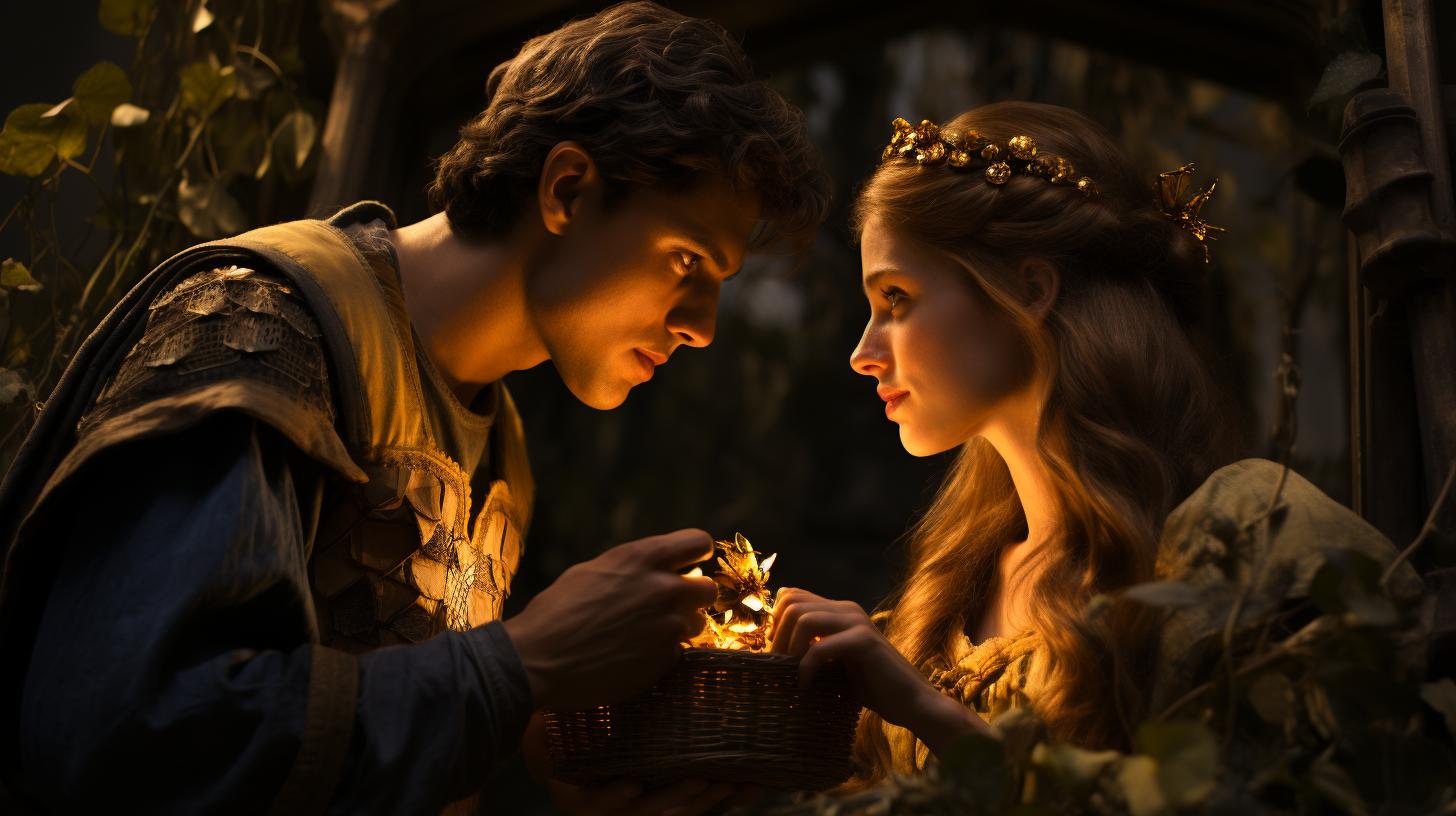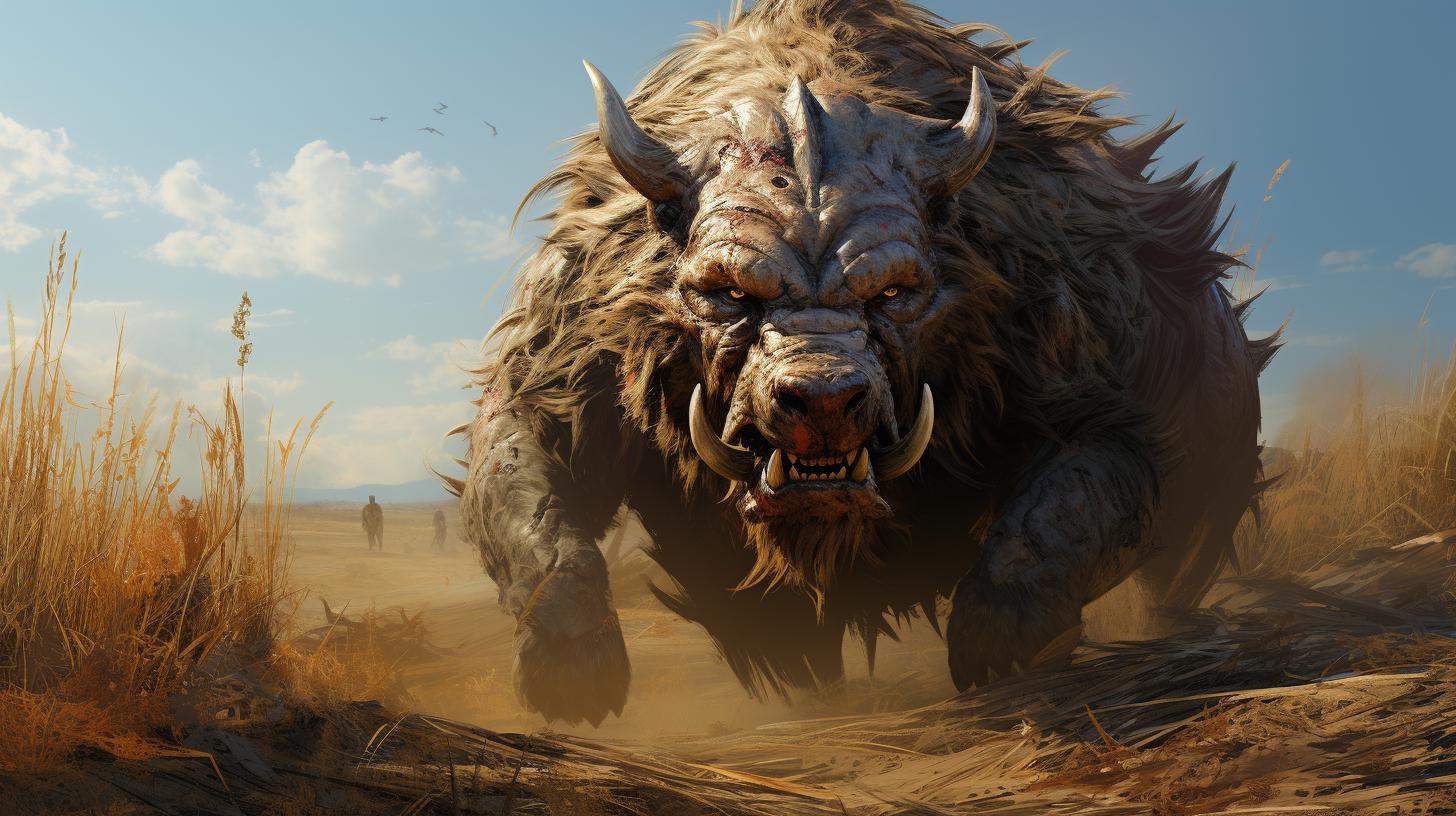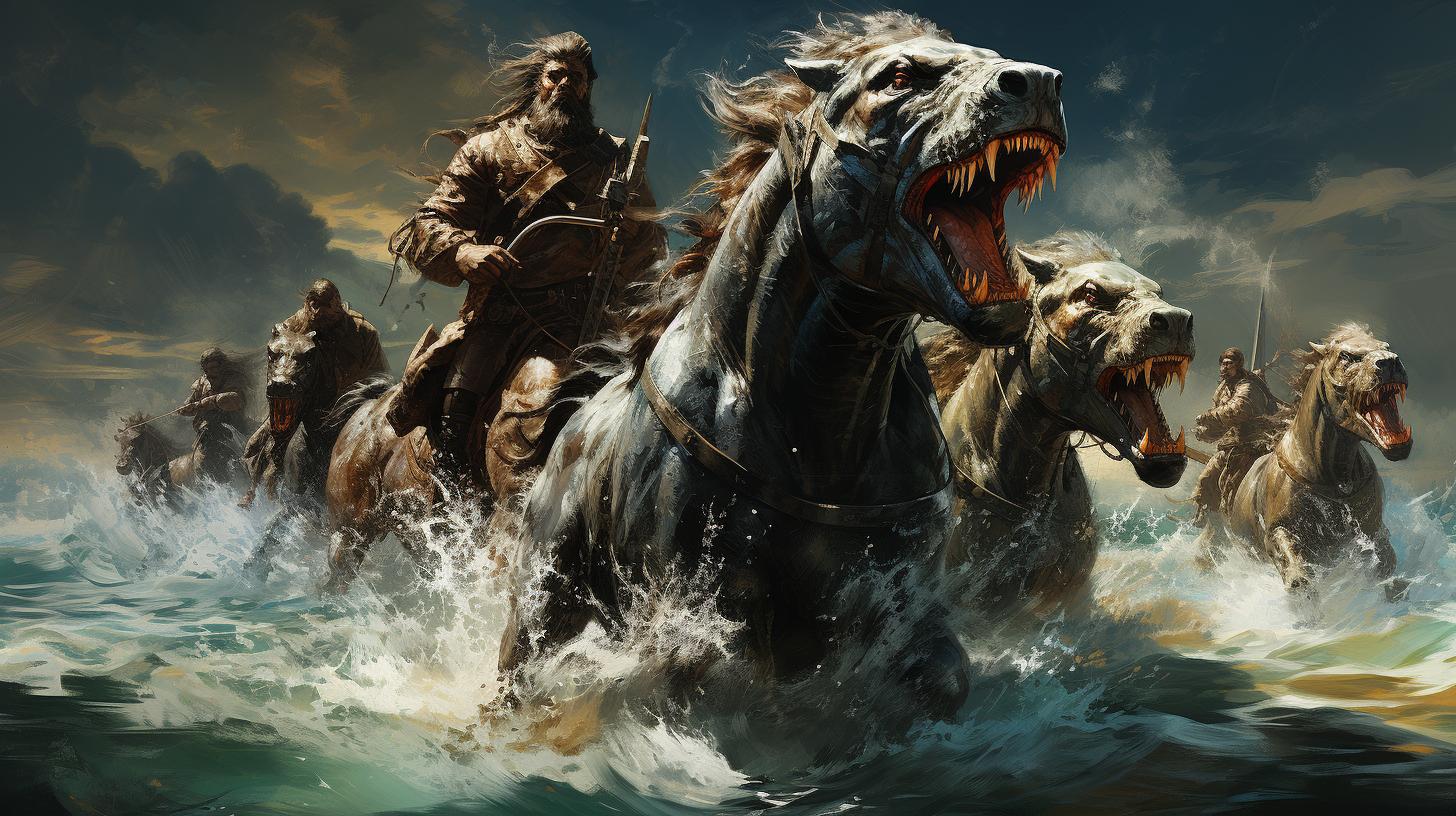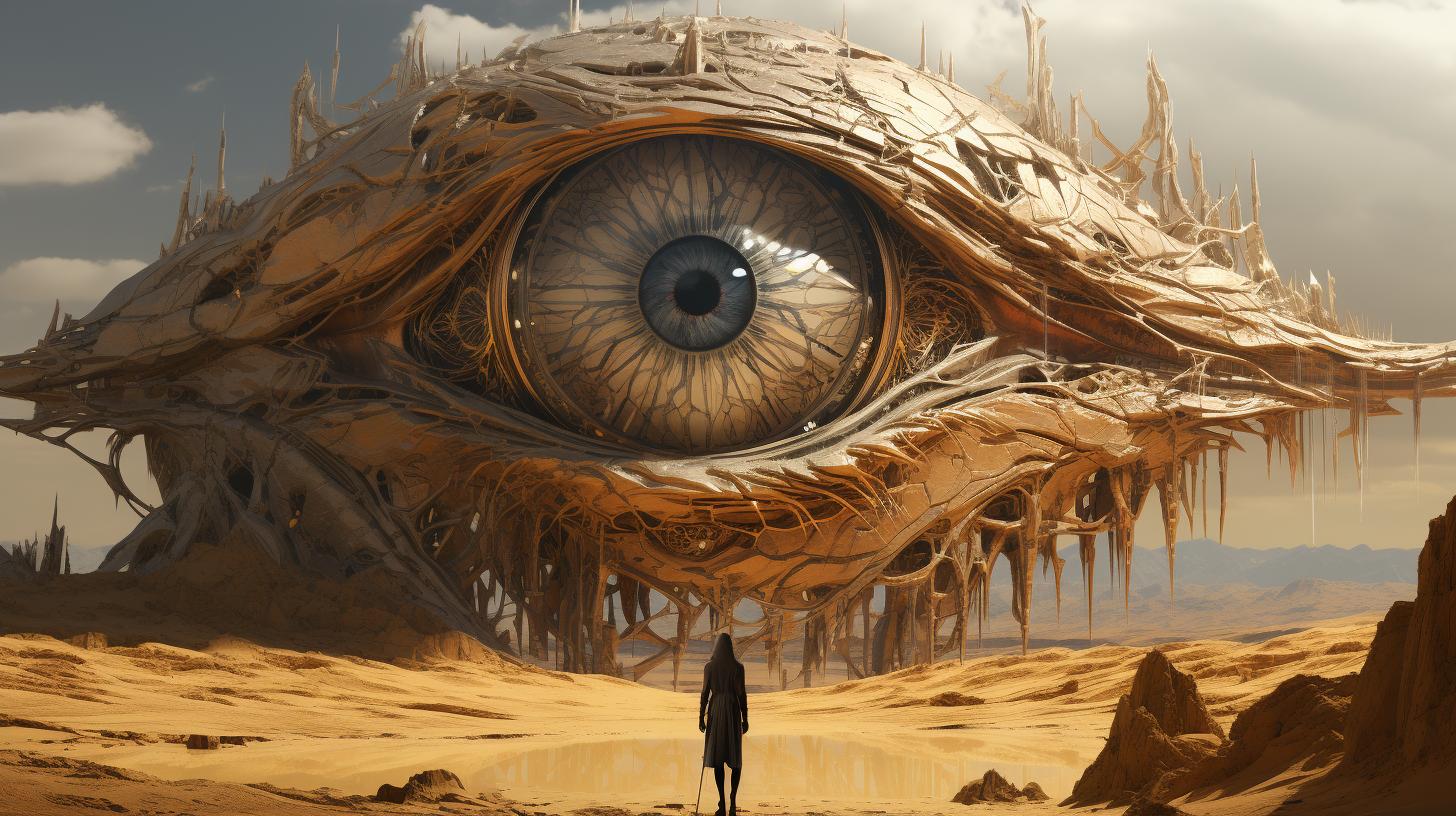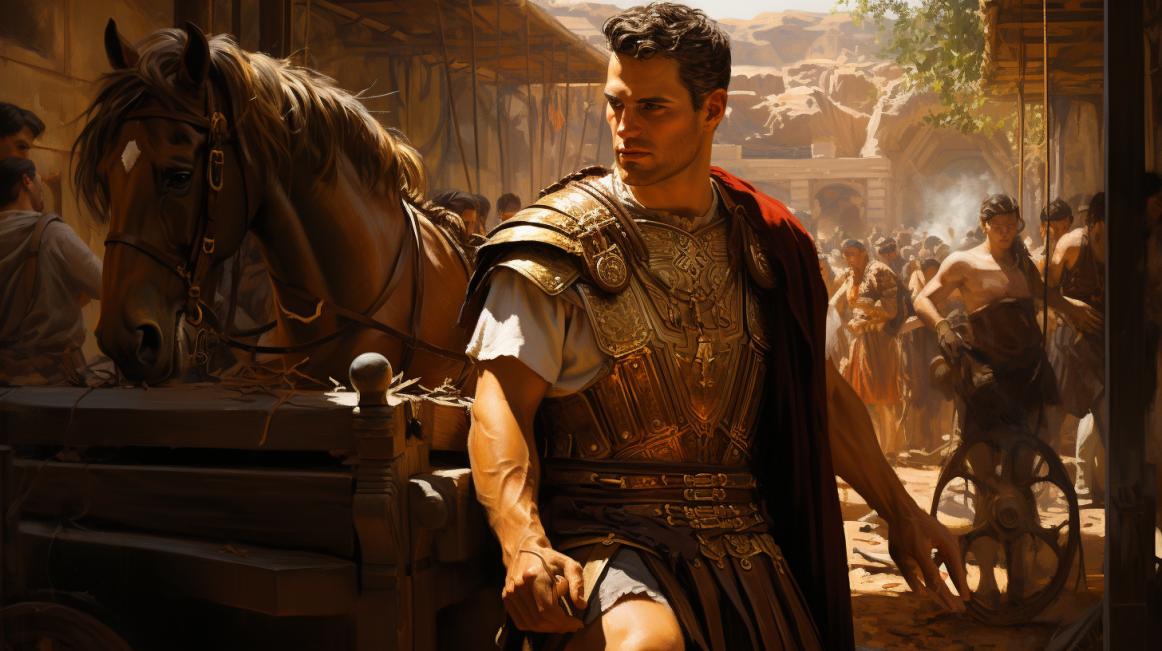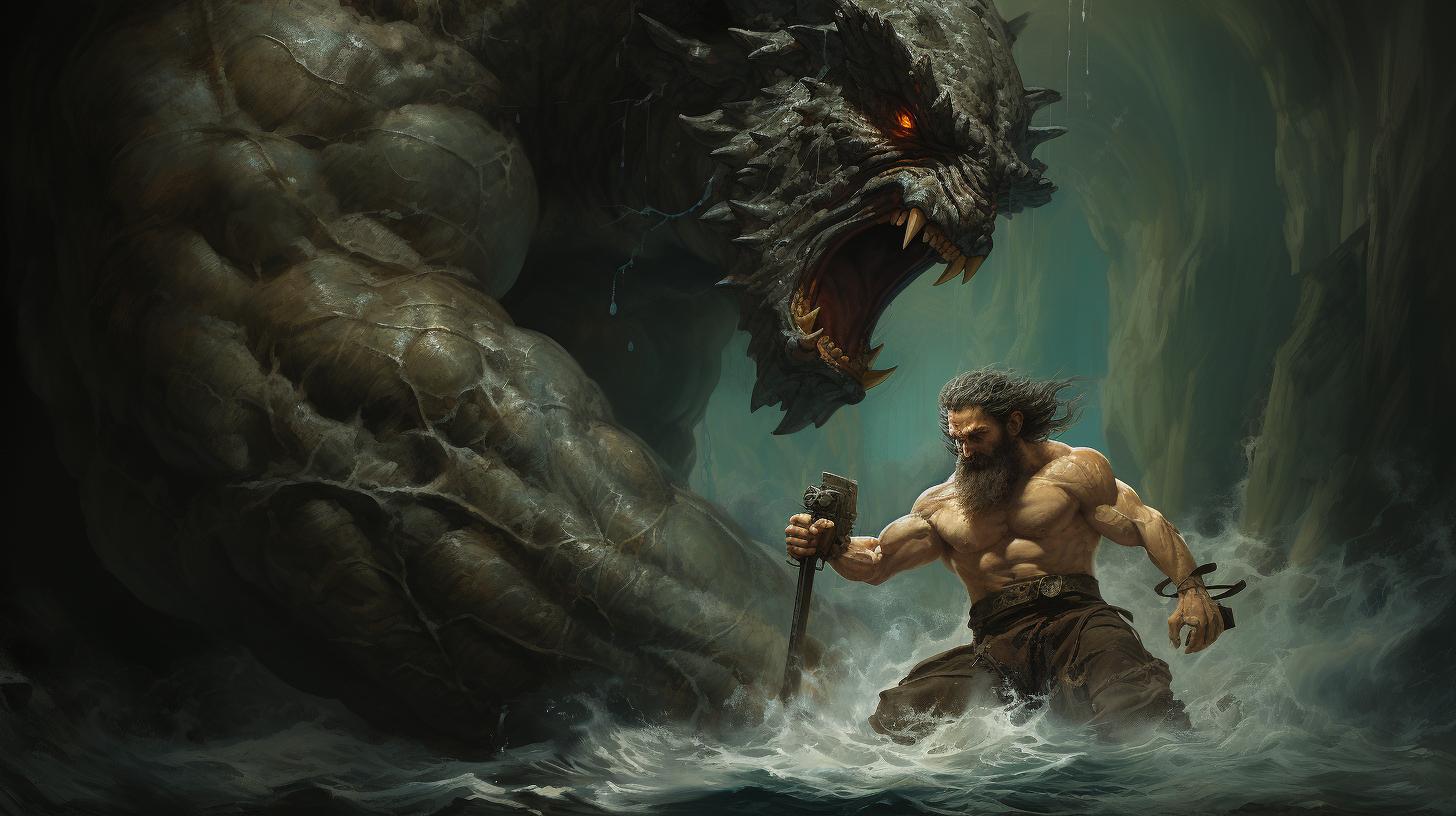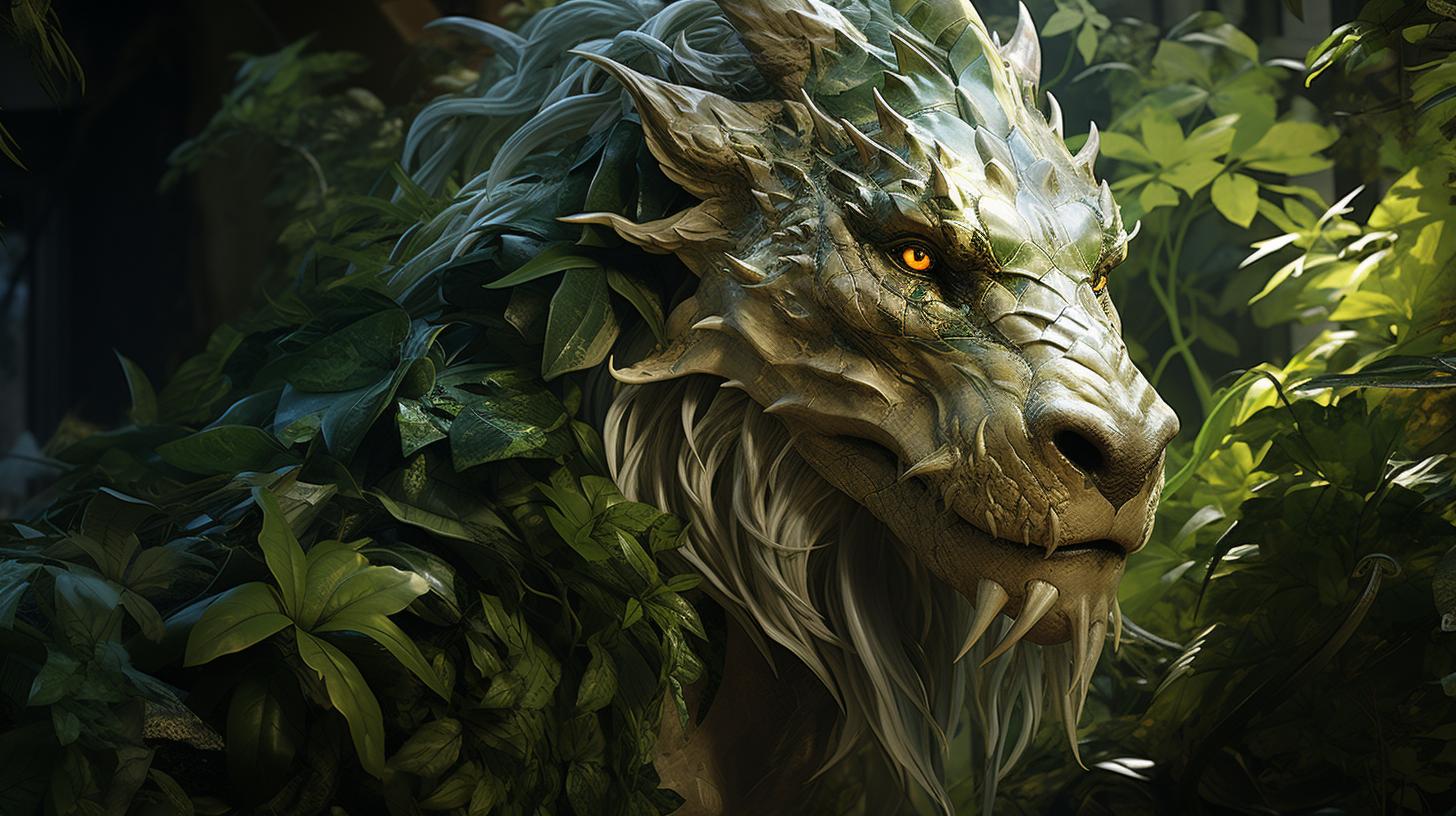Scylla and Charybdis in Greek Mythology: A Terrifying Tale
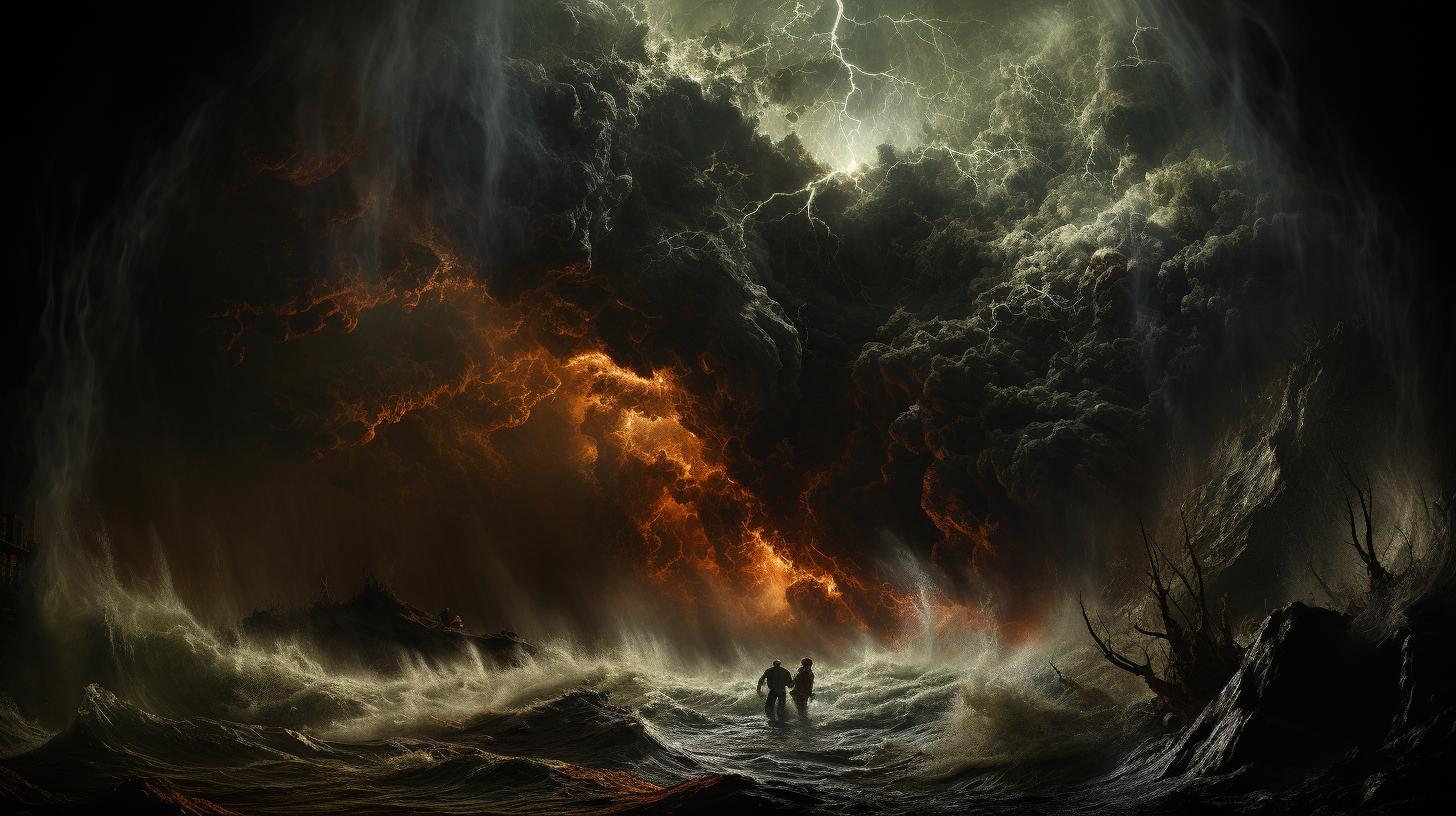
Scylla and Charybdis, two infamous creatures of Greek mythology, hold a prominent place in ancient tales. Scylla, a terrifying sea monster with six heads and twelve feet, resided in a cliffside cave, preying on unsuspecting sailors.
On the other hand, Charybdis was a deadly whirlpool that devoured anything unlucky enough to cross its path. Join us as we explore the origins, characteristics, and encounters with these mythical beings, as well as their significance in both ancient and modern culture.
From Jason and the Argonauts to Odysseus’s legendary journey, their stories continue to captivate and inspire.
Scylla and Charybdis: Exploring Greek Mythology
In Greek mythology, the tales of Scylla and Charybdis have captivated minds for centuries. Let us embark on a journey to uncover the origins and mythological depictions of these fascinating creatures.
The Origins of Scylla
Scylla’s origins trace back to the stories of ancient Greece. According to mythology, she was once a beautiful nymph who caught the attention of the sea god Glaucus. However, her rejection of his advances invoked the wrath of the jealous sorceress Circe, who transformed her into the terrifying sea monster we know today.
The Origins of Charybdis
Charybdis, on the other hand, has a different origin story. Some believe that she was once a mortal woman who angered Zeus, resulting in him transforming her into a massive whirlpool.
Others associate her with the offspring of Gaia, the Earth goddess, and Poseidon, the god of the sea. Regardless of her origins, Charybdis is depicted as a deadly force of nature.
Mythological Depictions and Interpretations
Scylla and Charybdis have been portrayed in various ways throughout Greek mythology. These depictions range from fearsome monsters lurking in the Strait of Messina to personifications of the dangers faced by sailors in treacherous waters.
Their tales have served as cautionary lessons about the perils of hubris and the importance of making difficult choices.
Scylla: The Terrifying Sea Monster
Scylla, one of the most fearsome figures in Greek mythology, is a creature that strikes terror into the hearts of sailors. Known for her monstrous appearance and insatiable appetite, Scylla is a formidable adversary in the treacherous waters she calls home.
Let’s explore the description and characteristics of this terrifying sea monster, her role in Greek mythology, and the legendary tales that feature her relentless pursuit of unsuspecting victims.
Description and Characteristics of Scylla
Scylla embodies sheer terror with her monstrous form.
She is depicted as a creature with six serpent-like heads on long necks, each adorned with three rows of razor-sharp teeth. From her gruesome torsos sprout twelve muscular legs, and around her waist, the heads of ferocious baying dogs create a haunting spectacle.
Her overall appearance is nightmarish, inspiring fear in all who behold her.
In addition to her intimidating physical attributes, Scylla possesses an insatiable appetite for human flesh. Waiting in her cliffside cave above the Strait of Messina, she eagerly awaits passing ships, ready to strike and devour unfortunate sailors who stray too close.
Scylla in Greek Mythology
Scylla’s origin story varies across different ancient texts, but her existence is often attributed to the wrath of the sea god Poseidon or the sorceress Circe. Regardless of her origins, Scylla’s role in Greek mythology remains consistent as a formidable obstacle that tests the courage and wit of heroes.
She is prominently featured in the legendary tale of Odysseus, where the hero’s encounter with Scylla becomes a pivotal moment in his arduous journey back home from the Trojan War.
Scylla serves as a symbol of the dangers and challenges that even the greatest heroes must face.
Encounters with Scylla in Legendary Tales
Scylla’s relentless pursuit and deadly attacks have left a trail of legendary tales in her wake. Countless ships and their crews have fallen victim to her ferocious assault, their desperate struggles to escape her clutches immortalized in Greek mythology.
One of the most famous accounts is Odysseus’s encounter with Scylla during his voyage home. Following the guidance of the enchantress Circe, Odysseus makes the difficult decision to sail closer to Scylla’s lair, sacrificing six of his sailors to the monster’s voracious appetite.
This tragic encounter serves as a testament to the relentless power and unforgiving nature of Scylla.
These encounters serve as cautionary tales, warning sailors and adventurers alike of the perils that lie in wait in uncharted waters, reminding us of the daunting challenges that heroes must confront in their quests.
Charybdis: The Deadly Whirlpool
Charybdis, also known as the Deadly Whirlpool, is a fearsome creature from Greek mythology. This section delves into its description, characteristics, its role in Greek mythology, and tales of ships caught in its grasp.
Description and Characteristics of Charybdis
Charybdis is depicted as a enormous whirlpool, capable of engulfing anything that comes within its vicinity. Its exact appearance varies in different myths, but it is often described as a massive swirling vortex in the sea.
Legends describe Charybdis’ voracious appetite for swallowing water three times a day, creating a powerful suction that drags ships downwards. Sailors would dread encountering this perilous whirlpool, as it would spell certain doom for their vessel.
Charybdis in Greek Mythology
In Greek mythology, Charybdis was believed to be the daughter of Poseidon, the god of the sea, and Gaia, the earth goddess. As a punishment from Zeus for stealing cattle, Charybdis was transformed into a monstrous whirlpool.
Charybdis is often mentioned alongside Scylla, presenting a deadly dilemma for sailors navigating the Strait of Messina. The tale of Scylla and Charybdis serves as a cautionary warning to those who dare to venture into treacherous waters.
Tales of Ships Caught in Charybdis’s Grasp
- In the epic poem Odyssey, the hero Odysseus and his crew had to navigate through the treacherous waters of Charybdis. Unfortunately, they encountered the whirlpool while trying to avoid Scylla. Charybdis swallowed the ship, but Odysseus managed to survive by grabbing onto a fig tree branch.
- In another myth, the ship of the Argonauts, led by Jason, faced the powerful forces of Charybdis. With the guidance of the goddess Hera, they narrowly escaped the deadly vortex.
- Various other stories recount the unfortunate fate of unprepared sailors who found themselves at the mercy of Charybdis. Their ships were pulled under the water, lost forever in the whirlpool’s relentless grip.
These tales demonstrate the peril and destructive power of Charybdis, serving as a reminder of the dangers of recklessness and the unforgiving nature of the sea.
Scylla and Charybdis in Mythological Stories
In Greek mythology, the tales of Scylla and Charybdis have been recounted in various epics and poems, showcasing their formidable presence and the challenges they posed to legendary heroes.
These stories shed light on the perils faced by sailors and the choices they had to make when navigating through treacherous waters.
Scylla and Charybdis in Jason and the Argonauts
One of the earliest encounters with Scylla and Charybdis is chronicled in the epic tale of Jason and the Argonauts.
As the crew sailed through the Strait of Messina, they found themselves in a perilous predicament. With the guidance of the Nereids, nymphs of the sea, they managed to navigate past Scylla and Charybdis, showcasing their resilience and resourcefulness in the face of danger.
Odysseus’s Encounter with Scylla and Charybdis
In Homer’s Odyssey, the hero Odysseus faced the daunting challenge of passing through the Strait of Messina. Seeking guidance, the sorceress Circe advised him to sail closer to Scylla, accepting the loss of a few of his men rather than risking the entire ship to Charybdis. Despite losing six of his sailors to Scylla’s clutches, Odysseus successfully navigated the treacherous waters and emerged as a testament to strategic decision-making.
Symbolism and Life Lessons in the Scylla and Charybdis Myth
The tale of Scylla and Charybdis has transcended its mythological origins to become a metaphor for difficult choices and the nature of adversity. It serves as a reminder of the delicate balance between risks and consequences, highlighting the need for wisdom and prudence when faced with parallel perils.
The story offers valuable lessons on resilience, sacrifice, and the ever-present challenges that test our mettle.
Scylla and Charybdis in Modern Culture
Scylla and Charybdis, the notorious figures from Greek mythology, continue to impact modern culture in various ways. Their compelling story and symbolism have found their way into literature, art, and even everyday language.
References to Scylla and Charybdis in Literature and Art
The gripping tale of Scylla and Charybdis has inspired numerous works of literature and art. Renowned authors like James Joyce in his novel “Ulysses” and Samuel Taylor Coleridge in his poem “The Rime of the Ancient Mariner” reference these mythical creatures, adding depth and complexity to their narratives.
Painters, sculptors, and other visual artists have also incorporated Scylla and Charybdis into their creations, capturing the terror and fascination surrounding these legendary beings.
Popular Culture Depictions and Adaptations
Scylla and Charybdis have made their presence felt in popular culture, appearing in various forms of entertainment.
These creatures have found their way into movies, television shows, and video games, captivating audiences with their monstrous and treacherous nature. Their stories have been adapted and reimagined, ensuring that their legacy lives on and continues to captivate new generations.
Impact on Nautical Terminology and Idioms
The Scylla and Charybdis myth has left a lasting impact on nautical terminology and idioms. The phrase “between Scylla and Charybdis” is often used to describe situations where one is caught between two equally unfavorable options, emphasizing the perils of decision-making.
This expression has permeated both maritime conversations and broader contexts, highlighting the enduring influence of these mythical creatures.
FAQs: Scylla and Charybdis in Greek Mythology
What is the origin of the Scylla and Charybdis myth?
The myth of Scylla and Charybdis has its roots in ancient Greek mythology. It is believed to have originated in the oral tradition, passed down through generations before being recorded in various ancient texts.
The earliest known references to Scylla and Charybdis can be found in Homer’s epic poems, specifically in the Odyssey.
What are the characteristics and abilities of Scylla?
Scylla is depicted as a monstrous creature with six heads and twelve feet. Each of her heads is equipped with three rows of sharp teeth, and her bodies are surrounded by the heads of howling dogs.
She resided in a cave atop the cliffs of the Strait, waiting to devour any unfortunate individual who came within her reach. No one could escape her voracity.
How did Odysseus navigate through Scylla and Charybdis?
When Odysseus encountered Scylla and Charybdis during his voyage back home after the Trojan War, he sought guidance from the witch Circe. She advised him to sail closer to Scylla, as Charybdis posed an even greater danger.
Following her advice, Odysseus steered his ship towards Scylla, sacrificing six of his crew members to the monster’s grasp, but ensuring the survival of the majority.
Are there any real-life counterparts to Scylla and Charybdis?
While there are no literal sea monsters like Scylla and Charybdis in the real world, their mythological significance is often metaphorically referenced in various contexts.
The notion of being caught between Scylla and Charybdis is used to describe being trapped between two equally unfavorable options or facing a dilemma where choosing one option inherently entails negative consequences.
What life lessons can be learned from the Scylla and Charybdis myth?
The tale of Scylla and Charybdis serves as a cautionary reminder of the dangers inherent in life’s choices and the perils of navigating treacherous waters. It emphasizes the importance of strategic decision-making and the need for individuals to weigh their options carefully.
Furthermore, it underscores the idea that sometimes sacrifices must be made to avoid more significant harm. The myth offers valuable lessons about the complexities of life and the need to navigate through challenging situations with wisdom and prudence.
.

